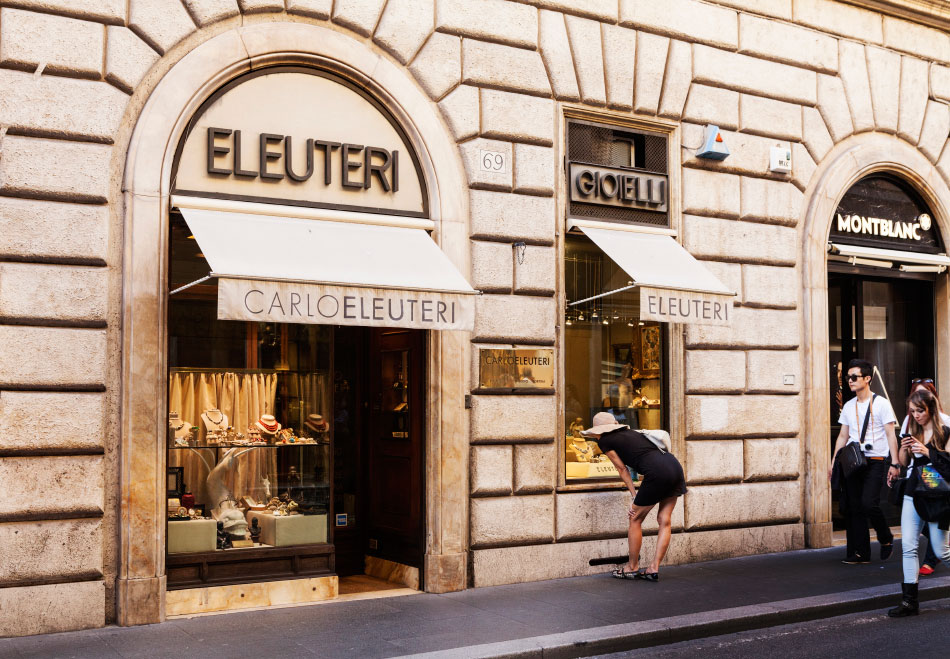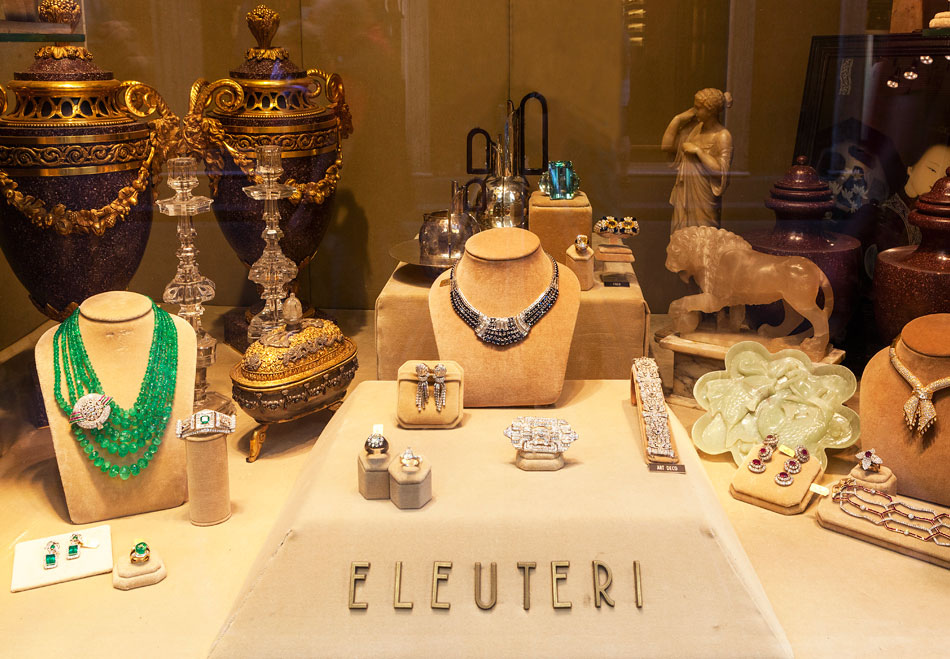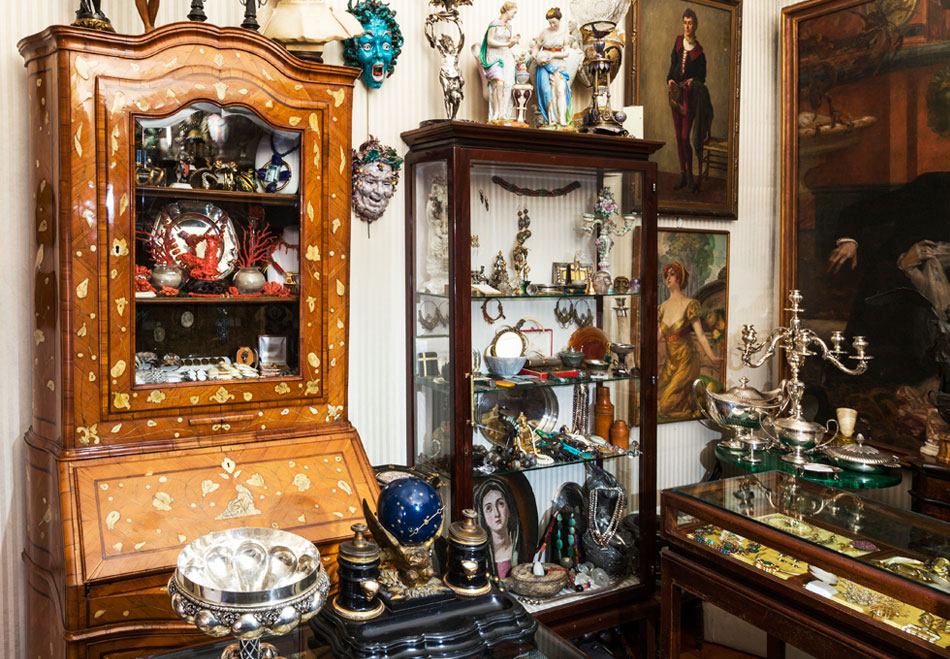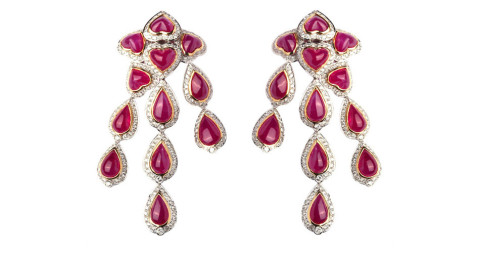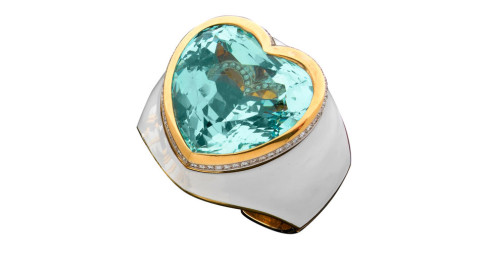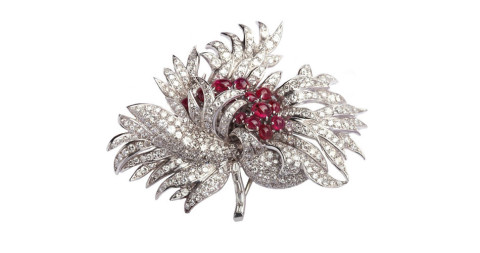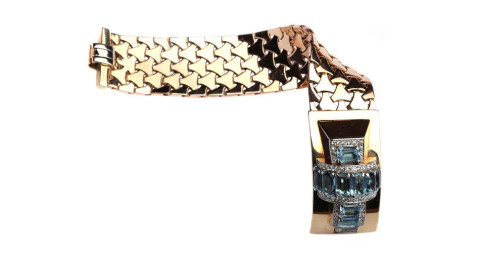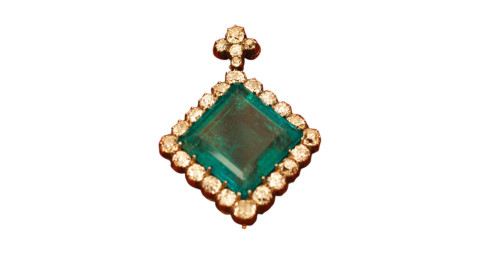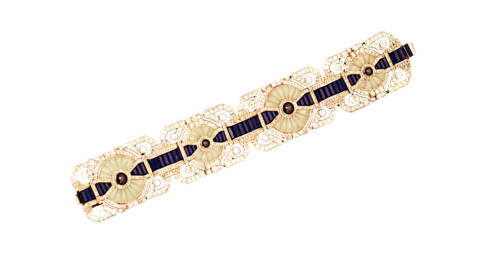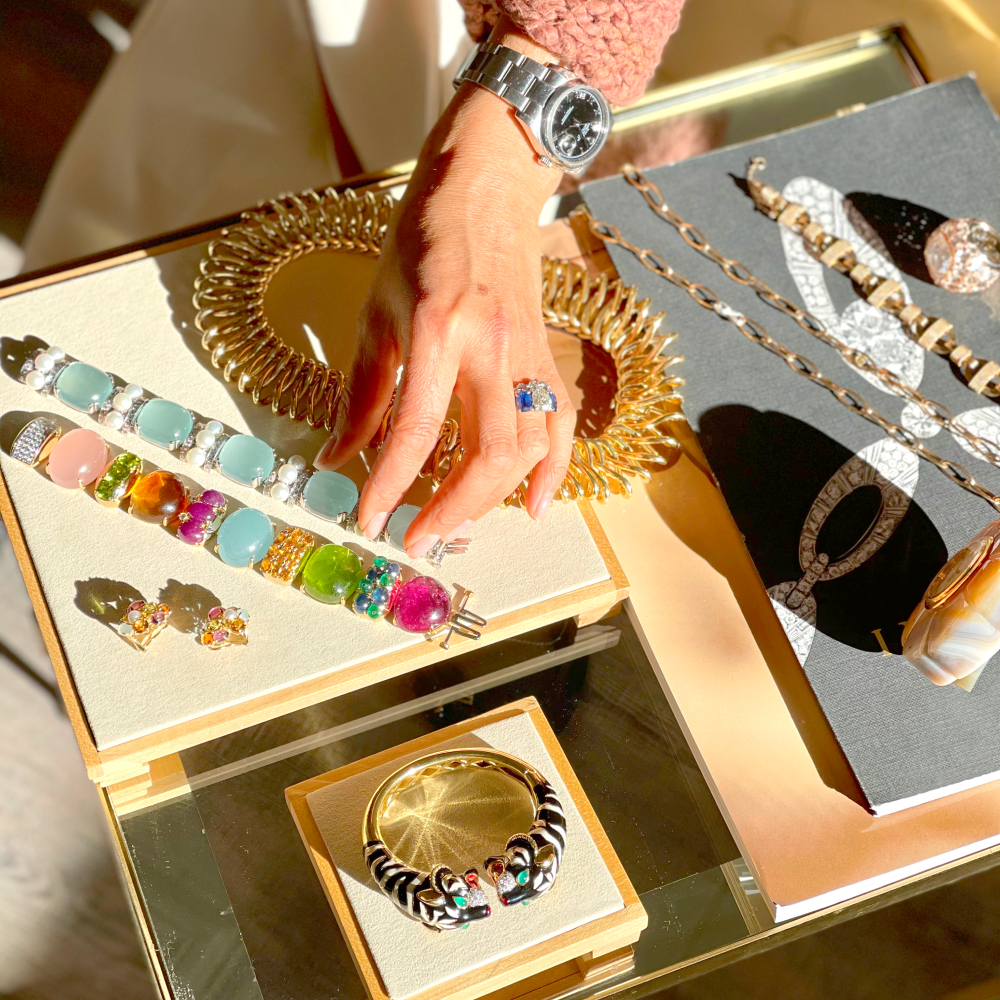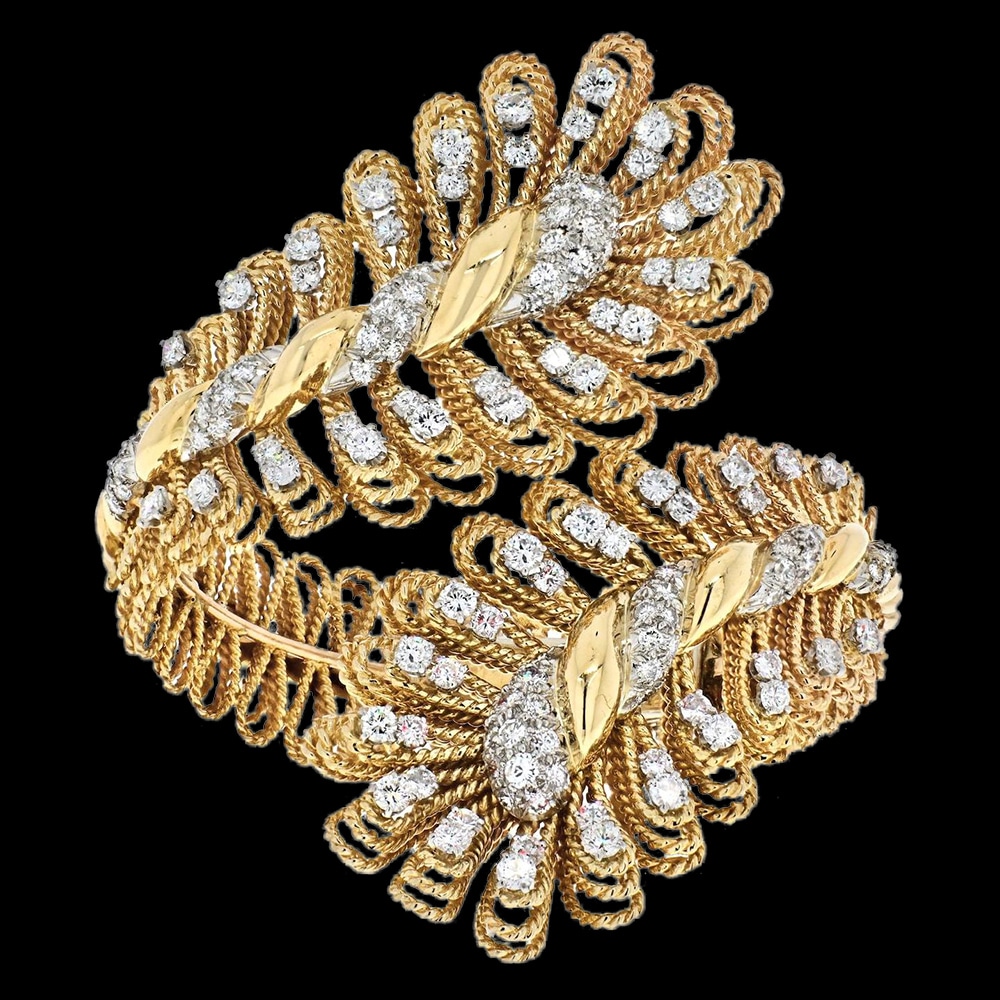
June 25, 2014In addition to jewelry, father-son dealers Carlo and Wagner Eleuteri sell European art and antiques. Top: David Webb bracelets, 1970s, hang on a bronze elephant from the 1920s. All photos by Steve Bisgrove
Today he is one of Italy’s most distinguished dealers in antique and vintage jewelry, but Carlo Eleuteri may have never entered the field if an anonymous widow hadn’t wandered into his first antiques shop — a seasonal boutique of sorts that he had started as an intrepid 21-year-old in 1972, in the southern Italian beach town of Maratea.
“This old lady, she came in, all dressed in black, and she asked me, ‘Do you buy old gold?’” Eleuteri recalls. “I said, ‘I don’t know. Show me something.’” So she showed him a long lariat necklace, asked a reasonable price, and he bought it. And then, with some skepticism, he put the piece in the shop window. It sold the next day.
Later that same week, another widow walked into the store — “She must have been called by the other,” Eleuteri muses — and asked if it was true that he bought old gold. “It depends,” Eleuteri responded. “Show me what you have.” What she had was a pair of chunky earrings and an equally showy bracelet. The dealer bought them, put them in the window, and a couple of days later they too were gone.
With that, a specialty in vintage jewelry was born. Today, in addition to his petite flagship on Rome’s tony Via dei Condotti, Eleuteri has five satellite shops around the country: in Florence, Milan and Venice, plus the chic resort towns of Porto Cervo, on Sardinia’s Costa Smeralda; and Cortina, in northern Italy’s Dolomite Mountains.

Clockwise from top left: a 1970s cuff topped with a 490-carat aquamarine; a mid-19th-century souvenir necklace with micromosaics of Roman sites; 1970s emerald-and-diamond and star-sapphire rings; an Art Deco–era Cartier compact fitted with 18th-century Chinese mother-of-pearl plaques.
In the Rome shop, shimmering ivory fabric covers the walls behind heavily framed 19th-century art hung salon-style, while glass-fronted marquetry cabinets and vitrines atop oriental carpets overflow with bijoux and precious objects of all kinds: necklaces and bracelets in coral and bone, strands of natural pearls, silver candelabra, compacts inlaid with colored mother-of-pearl, decanters and sets of cutlery ample enough to set a table for more than 20.
In an adjacent room, photos depicting Eleuteri with some of his most prominent clients sit above carved-wood wainscoting: Chanel’s Karl Lagerfeld, Tod’s CEO Diego Della Valle, Sharon Stone, Elton John and former Italian prime minister Silvio Berlusconi. Eleuteri also counts Giorgio Armani and Valentino among his buyers, as well as Italian socialites, Middle Eastern sheikhs and Russian moguls.
These days, Eleuteri has developed a particularly posh specialty in signed Art Deco pieces by such blue-chip names as Cartier, plus items from the 1940s and ’60s — not least of all David Webb’s bold designs, including his celebrated animals realized in precious metals and studded with dazzling stones.
Deco jewels, as well as anything with natural pearls, are perennial favorites, notes Eleuteri’s 26-year-old son, Wagner, who recently returned from gemology studies in the United States to join the family business.

Made by Tétard Frères of Paris in 1890, these vessels represent a mere fraction of a 559-piece set of silver serving items and flatware that the Eleuteris currently have on offer.

While many collectors will make an appointment to visit the gallery, walk-ins are very much welcome. Window displays like this one — which features a colorful selection of signed vintage pieces — make such impromptu browsing and buying visits a frequent occurrence.
Eleuteri’s two daughters, Etrusca and Vesta, will soon have a hand in the business as well. Both in their early 20s and interested in design, they’re part of the driving force behind plans to create a contemporary jewelry line. The family is also looking at opportunities to open galleries abroad and is exhibiting at Masterpiece London, their first fair in decades, from June 26 through July 2. To this prestigious gathering they are bringing such sought-after pieces as a late-19th-century triple strand of perfectly round natural pearls with coordinating drop earrings, a 98-carat Victorian-era Colombian emerald pendant on a diamond line, a 1938 Cartier collier incorporating 100 carats of diamonds and natural Burmese rubies and a collection of estate Bulgari pieces from the 1960s and 1970s — some of which were included in the recent blockbuster exhibitions devoted to the jewelry house in Rome, Paris and Beijing.
After 40-plus years in business, “a certain set of people, they know us,” Eleuteri concludes. “When they are looking for a special piece of jewelry, they think of our galleries.”
Visit Carlo Eleuteri on 1stdibs
Talking Points
Carlo and Wagner Eleuteri share their thoughts on a few choice pieces.

